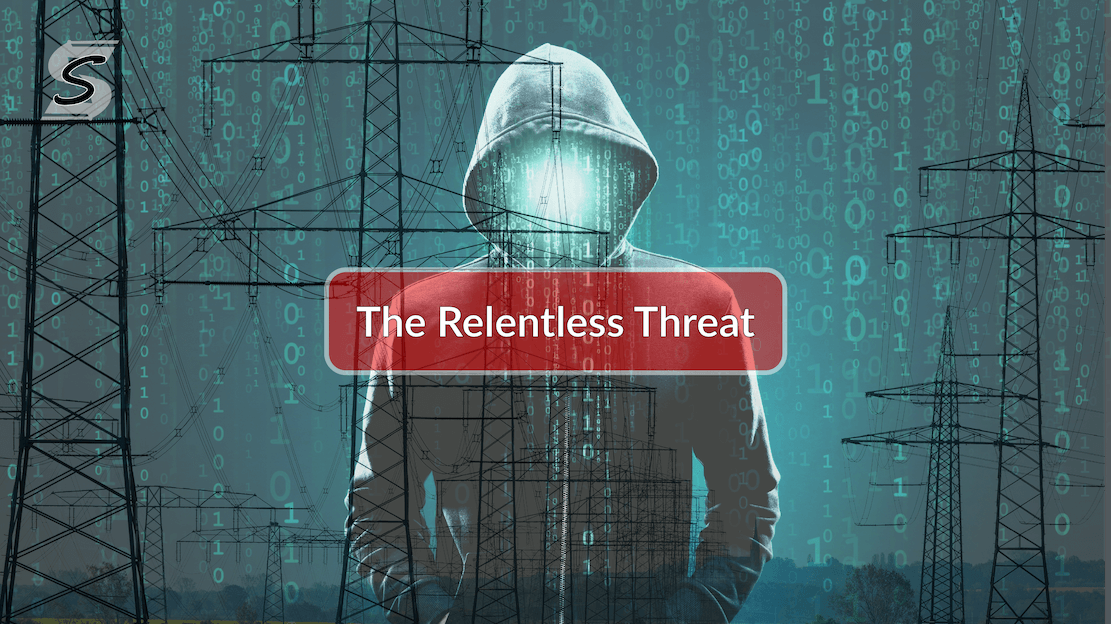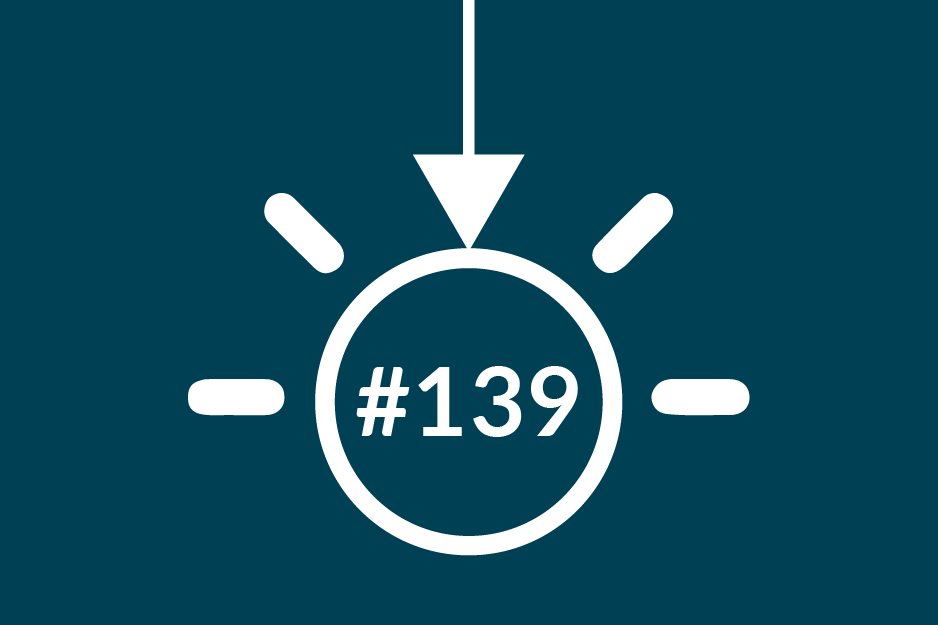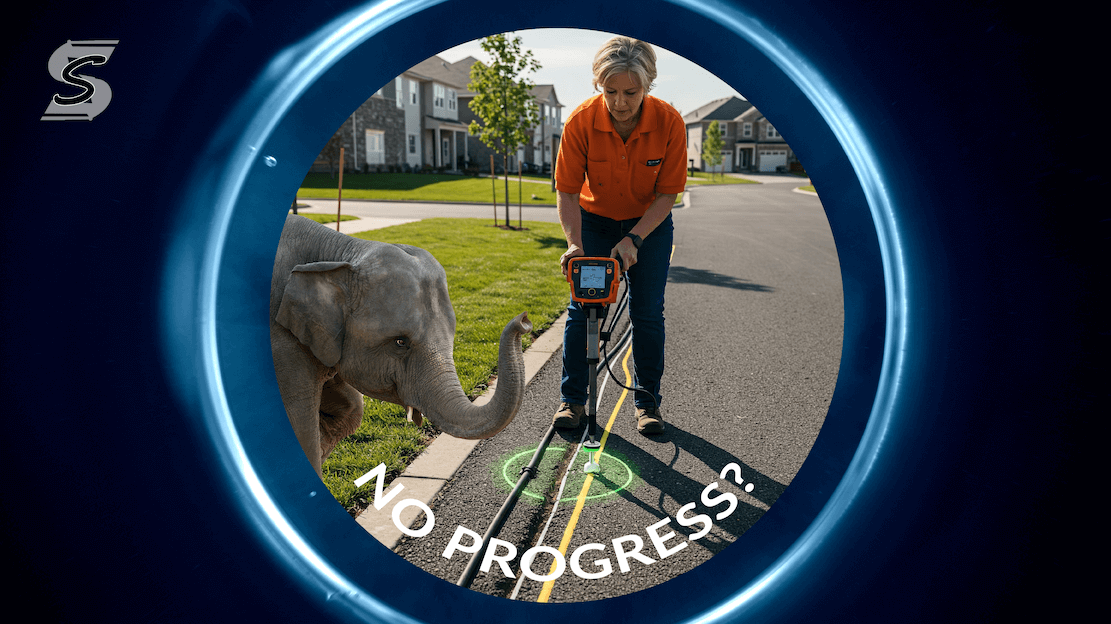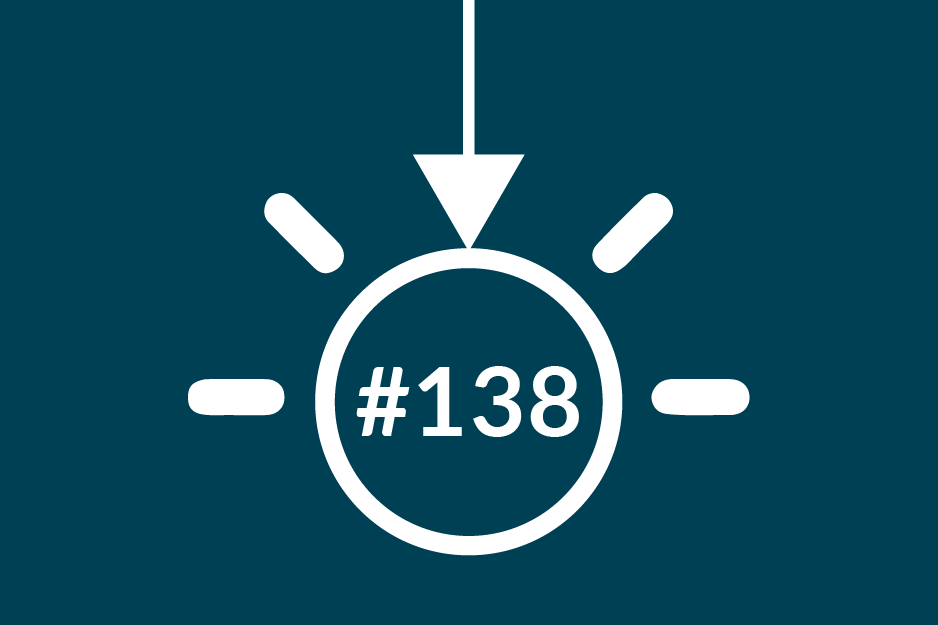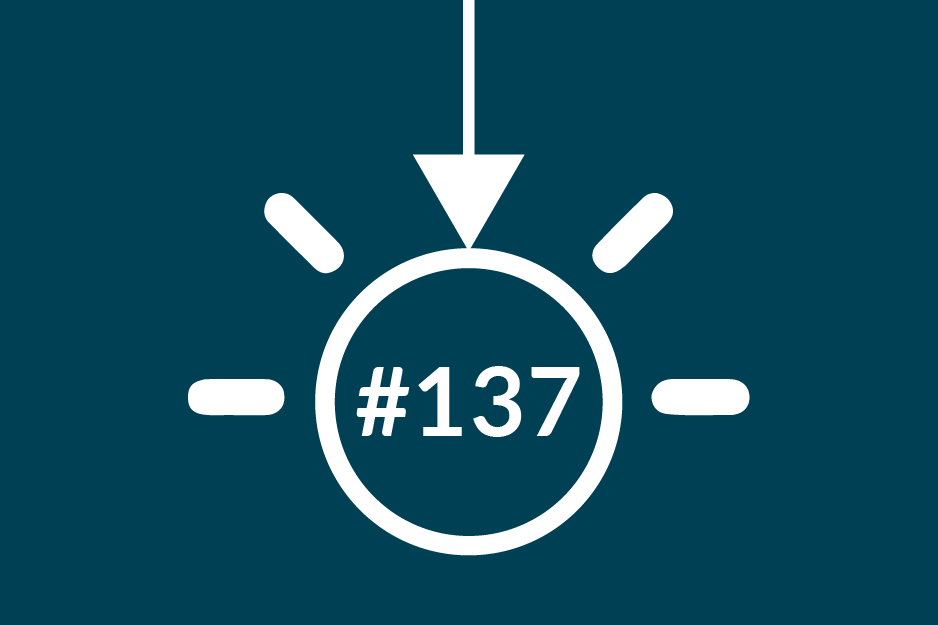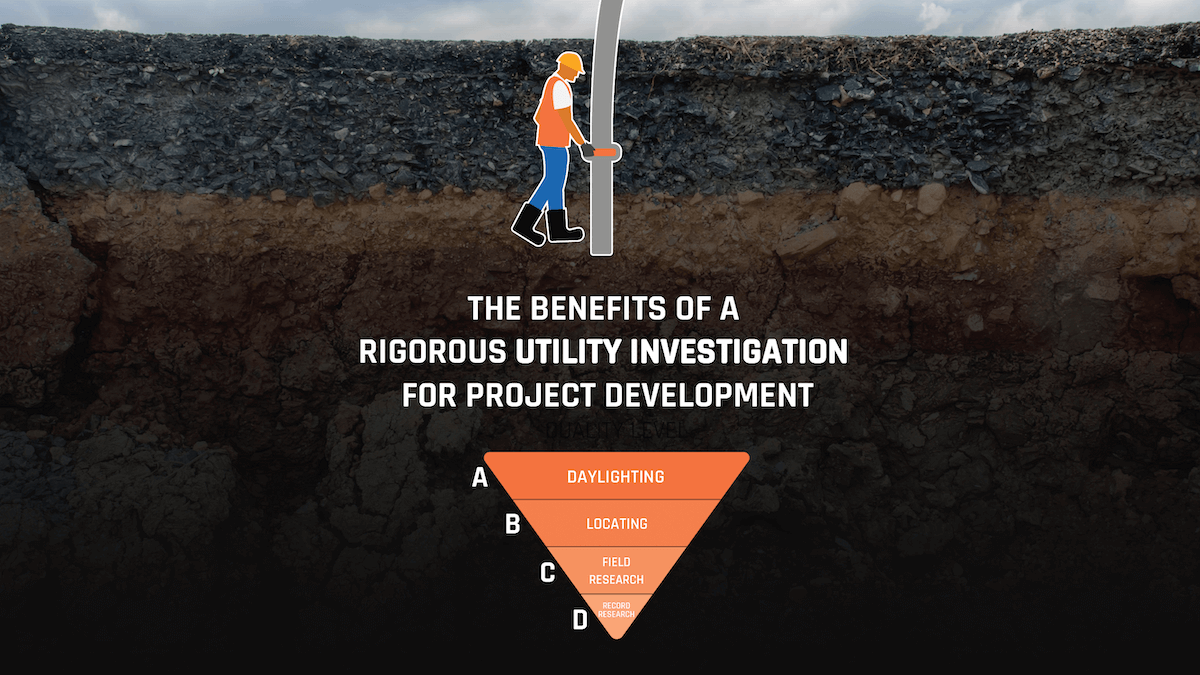
This article was first published in ASCE Illinois Section News, Vol. 63, No.4 Winter 2022
There are several risks that might prevent a project from being completed in a safe manner, on time and within the construction budget. These risks typically include permits, rightofway acquisitions, unsecured construction easements, unexpected or changing site conditions, and utility conflicts and protection. This article will emphasize a way to mitigate the risks associated with utility conflicts and protection.
Proper utility identification during design and inclusion as part of the bid package can facilitate projects being constructed safely, on time, within the construction budget and with minimal disruptions to the services provided by the utility companies. ASCE has published two separate standards regarding utilities to assist in project delivery. ASCE/CI/UESI 3822 Standard Guideline for Investigating and Documenting Existing Utilities is an update to the 3802 standard reflecting the updated changes in practice, technologies, and research for detecting/documenting the uncertainties of locations of underground utilities and other infrastructure. ASCE/CI/UESI 75 Standard Guideline for Recording and Exchanging Utility Infrastructure Data establishes minimum, optional, and conditional elements of spatial and nonspatial attribute data associated with utility infrastructure. The standard guideline also provides recommendations for effective practices to facilitate data exchange among project stakeholders. It is essentially a “how to specify the creation of a utility certified record drawing” so that individual utility owners’ facilities and project utilities have standardization rather than literally hundreds of differing formats and accuracies and amounts of details about the new or relocated utilities within a project’s limits. The guideline is critical to capture, document, and exchange utility data for project scoping, planning, design, construction, operation, and longterm management of utility systems as well as the management of public rightofway and properties throughout which utility infrastructure are installed. It is also beneficial to facilitate the interaction among stakeholders for managing utility and other civil infrastructure.
Although each project is different and warrants its own procedures, there are some common practices that lead to an efficient useful investigation that provides data in time for the designers to use it effectively. The first practice is to collect utility information as early as possible in project development. Early decisions such as line and grade, deep versus shallow drainage systems, siting of bridge foundations or structure footings, rightofway requirements, and more are expensive to redo or change if a utility requiring a long lead time or high cost for relocation is discovered late in the process. Since it is well established that utility records are many times incorrect, difficult to obtain, or unavailable, comprehensive geophysics are typically applied within the project footprint, and the results of the geophysics synthesized with existing records and visual evidence. Communicating these data to individual task designers along with ramifications of cost and schedule implications if conflicts cannot be avoided fosters good design decisions.
How to synthesize and display the geophysical, visual, and record data is described in ASCE 3822. Utilities within a project’s limits are not static; new ones are added, the project may relocate some early, and there may be other changes. A mechanism to keep the utility data current throughout project development is an essential practice. As new data is added to the project, communication of those changes to the task designers becomes important. Hence, fees and lines of communication for this service must be established. Geophysics, visual evidence and records are uncertain and require professional judgment. If a potential conflict is identified between the utility data and the design, exposure and accurate measurements of what is discovered in the excavation should be made. These results may change the judgments of the previous work, so provisions should be made to update this data so that the snapshot in time is as reliable as possible. So, the process of investigating and documenting existing utilities on a project is iterative and requires continual communication between the project parties.
Utility coordination typically includes, but is not limited to, these tasks: utility conflict identification; meeting setup and management between design consultants, utility owners, and permit agencies; determination of prior rights; sequencing of utility construction; relocation routing; relocation design; salvage value; utility plans and estimates review and approvals; determination of and securing of required utility easements and temporary construction easements; scheduling; writing special provisions; agreement development; securing policy exceptions; developing design alternatives, costs, time versus utility relocation; and performing municipal water and sewer design.
This process involves the utility owner early in the project which is sometimes a challenge. For preventing damages during project development, a budget needs to be established. This amount is not widely known nor shared in the A/E/C industry for a complete SUE Investigation. The industry standard is 0.5% to 2% of the construction value. Breaking this down further, assume 0.5% to 1% for rural projects and 1% to 2% for urban projects. These numbers are for budgeting purposes and might have to be doubled given the individual nature of each project. Let us encourage our fellow A/E/C professionals, clients, and utility owners that a complete SUE investigation, QL B (which will likely contain QL C and QL D depictions) and QL A test holes, if needed, be performed as part of the engineering plans that are advertised for bid or negotiated for bid and can be shared with the applicable utility owners. We feel that utility identification at this stage of planning and design development helps to prevent utility damages and service disruptions to the utility companies and their customers.
With this process, the utility locators responding to the excavation tickets during the construction phase will have the best available information to ensure that what they identify on the ground is the same as what is shown on the final construction plans. If not, then the Contractor is not to proceed until a resolution has been agreed to by the various stakeholders. This proposed method will not eliminate risk, but it can go a long way to minimizing the risks in a potentially dangerous business. What happens if a complete SUE investigation is not performed? The contractor files a claim for delay, and the cost of the delay might be more than the consultant’s fee. Nonetheless for the consultant, there is the potential loss of goodwill and reputation with the client.
You might remember the old Fram oil filter commercial, “You can pay me more now, or you can pay me more later?” But today we might add, “Either way, you are going to pay more!” The question that the Consultant, Client and/or the Utility Owner needs to ask themselves is, “Which dollars are cheaper, today’s or tomorrow’s?”
Author Bios:
Steven M. Rienks, P.E., PMP is the Director of Engineering/Senior Project Manager at American Surveying & Engineering. He is a registered Professional Engineer in several states, certified Project Management Professional, qualified and/or experienced In Civil Engineering projects, but also mentors/coaches younger/enthusiastic Civil Engineers.
Steve is an ASCE Life Member, Chair for the UESI Illinois Chapter, Mentor in the ASCE Mentorship program, and Member at Large T&DI.
James H. Anspach, P.G. (r) is the Affiliate Assistant Professor at Iowa State University Civil, Construction and Environmental Engineering. He has over 40 years of developing and leading the subsurface utility engineering profession and the utility engineering profession.
James is a Distinguished Member ASCE, Founding Governor & President 2018: ASCE Utility Engineering and Surveying Institute, Chair ASCE Construction Standards Council, and Chair ASCE 3822 "Standard Guideline for Investigating and Documenting


